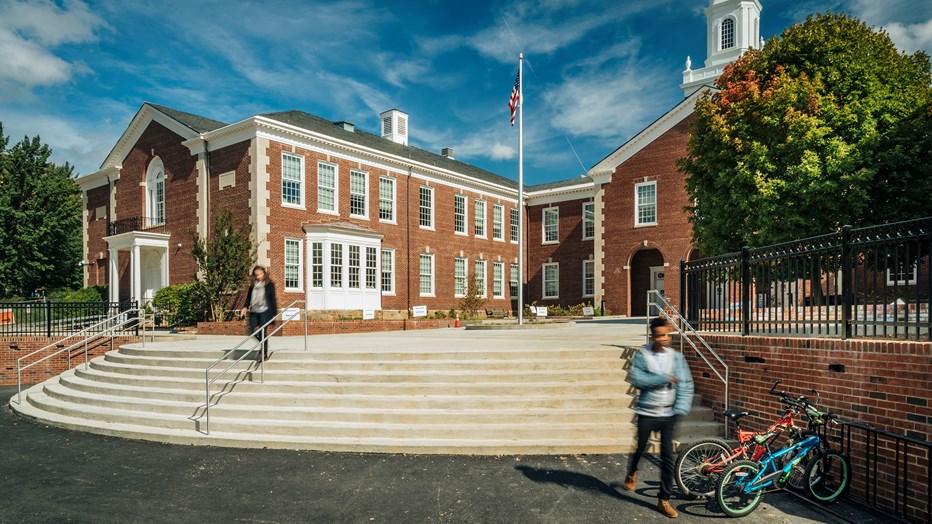Skanska was the design-builder on this fast-track, modernization and expansion project in a tight, urban location. Lafayette Elementary School was built in 1931 and included a significant addition from the 1970s, making the current building approximately 98,600-SF. The original building is considered historically significant by the DC Historical Preservation Review Board. The school currently serves nearly 700 students with a primarily open floor plan. Our work included demolishing the 60,000-SF addition and replacing it with a new addition, increasing the school's total square footage to 120,000-SF and increasing their student capacity to 805. The open floor plan was abandoned for more traditional classrooms and corridors. The modernization included restoration of the existing schoolhouse facade, a slight enlargement of the existing parking lot, renovation of all exterior play and field surfaces, green roofs and other stormwater management features to meet the latest District of Columbia Department of the Environment requirements. The project is targeting LEED Gold certification. The project also included the fast-track construction of a 720-student, 82-classroom trailer swing space located on the existing ball fields at the rear of the school site. The swing space community housed the entire school population including a warming kitchen, a tent for group activities, cafeteria, health suite, computer lab, all connected by elevated and covered walkways and was ready for occupancy in nine weeks. Swing space construction began in June 2015 and was completed in August 2015, with over 40,000 man hours worked without a safety incident. Skanska was responsible for maintaining the swing space during the project, including snow removal, maintenance of equipment and staging. Safety, communication and extensive signage were our primary focus with these temporary spaces.








